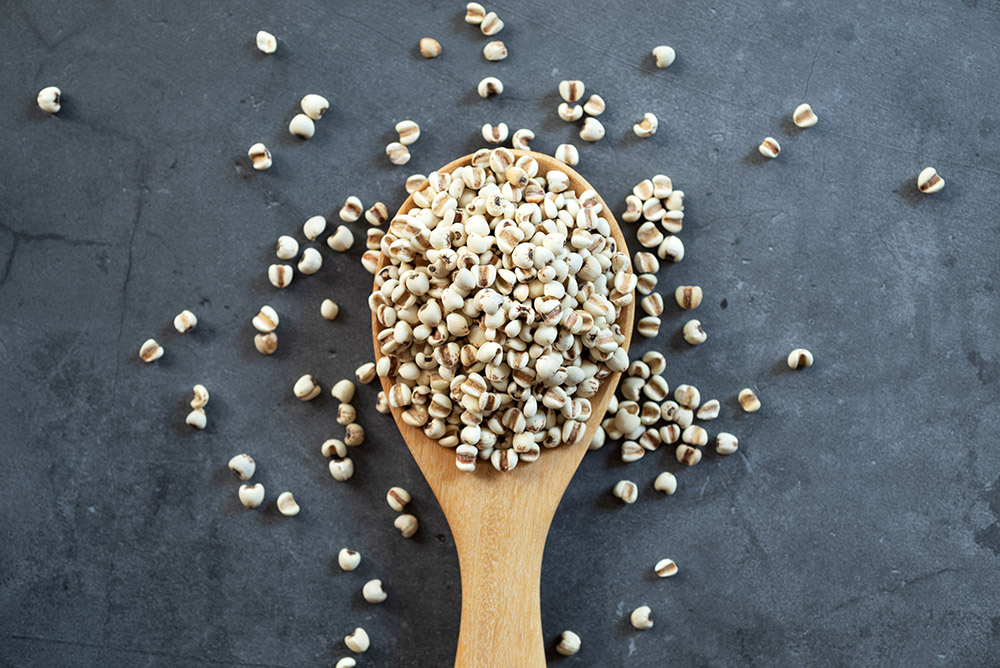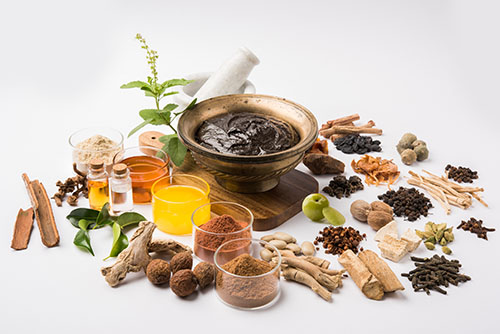Bermuda Grass (Durva): The 2nd Holiest Herb; The Number 1 Weed!

Many of my readers will have heard that holy basil (also known as tulsi, Ocimum sanctum/tenuiflorum) is the most sacred herb in India.
But did you know that the second most sacred Indian herb is so widespread throughout the world as a noxious weed that even the most dedicated organic gardener might, in a moment of amnesia, look longingly to Monsanto’s infamous Roundup for relief?
Durva
It is Cynodon dactylon, called durva in Sanskrit and better known as Bermuda grass. According to Hindu belief, while tulsi is sacred to Krishna, durva is sacred to Ganesha. Ganesha is depicted as an elephant and represents the oversoul or “Atman” and is considered “the remover of all obstacles.”
Besides durva, this herb is also commonly known in Hindi and Urdu as dub, dubra, durba, and budla. Some English names besides Bermuda grass include bahama or kweek grass, couch grass, quack grass, twitchgrass, star grass, and doob grass.
Couch Grass or Bermuda Grass
Western herbalists know and use couch grass, Elymus repens, (also known as “dog grass” because when dogs are sick they tend to chew on the leaves). Couch grass is not the same herb as Bermuda grass, but can be used interchangeably with Bermuda grass, and has been in continual usage since ancient Greco-Roman times. Medieval herbalists used it to treat inflamed bladders, painful urination, water retention and for its antiseptic properties. Like its Ayurvedic counterpart, couch grass is used for chronic skin conditions, urinary tract disorders, as well as diabetes, bronchial irritation, mucus, gout and rheumatic conditions. The recommended dose is 6 to 10 grams of the rhizome and whole herb once or twice daily.

Durva grows wild throughout India and is commonly cultivated as decorative lawns. But here it is regarded as a first-class weed. I’m not sure this article will make many western gardeners or herbalists feel more kindly to this most aggressive and tenacious invasive perennial, but perhaps there is some intellectual satisfaction in recognizing that it evidently has some potent healing properties — enough to rank it number two in a culture with a rich 3000 year-old botanical tradition. However, just because it is popularly regarded in India as sacred and medicinally potent doesn’t mean that it has prominent use in Ayurvedic herbal practice.
Perhaps, as we go over what is known scientifically, historically and traditionally about its medicinal properties, as well as its obvious abundance, we will find that it is an herb we should consider more seriously; or maybe it will inspire a renewed healthy respect for the similar healing properties of its relative, couch grass.
Durva contains the hormone precursor sitosterol as well as carotene. In addition, it contains Vitamin C, carotene, palmitic acid, triterpenoides, arundoin, friedelin, selenium vanilinin, alkaloids, ergonovine and ergonovinine. It is high in mucilage. Agropyrene, a volatile oil, contributes to durva’s therapeutic antiviral and antibacterial properties, and also caused it to be burned as incense during the Middle Ages. An alcoholic extract of the whole plant has shown both broad-spectrum antibacterial and antiviral properties.
Properties: anti-inflammatory, antiviral, antifungal, hypoglycemic, diuretic, antilithic, hypotensive, coagulant antidiabetic, antibiotic, anticancer.
Ayurvedic properties: heavy, cool; astringent and sweet; post-digestive flavor is sweet. Prabhava or special property is to prevent miscarriage.
The whole plant can be used both internally and externally. It is anti-pitta meaning that it is anti-inflammatory. As such, it is classified as being refrigerant, detoxifying, relieves burning, is applied externally for wounds, stops bleeding including nosebleeds, relieves itching, relieves burning hemorrhoids, clears the skin; is used to treat erysipelas, shingles, and urticaria taken internally and applied as a wash, ointment, or poultice externally. A paste of the herb can be mashed with a little hot water and when cool enough applied to the forehead. Durva is also used as an anxiolytic.
Internally the whole plant can be taken as a powder, tincture or tea for dysentery, irritable bowel and Crohn’s disease, diarrhea, menorrhagia, uterine bleeding, to prevent abortion and even to promote fetal development. Yes, this is one herb that can and maybe should be taken during pregnancy! After childbirth it is used as a galactagogue stimulating the production of mother’s milk.
Overall durva is a good detoxifier but I don’t expect that it will become one of the top commercial herbs nor is it likely that a pharmaceutical company will invest the millions of dollars in research to prove its efficacy with the possibility of a new drug, say, for shingles, psoriasis or IBS. It’s the same with most medicinal herbs, but for durva up that in spades — the chance of capitalizing on such a common weed, especially when it has such a wide and diverse range of uses, is like threading an elephant through the eye of a needle.
Being an extremely safe herb, comparable to wheat grass, wheat and other grasses, the therapeutic dose of the alcoholic liquid extract is 2 to 4 teaspoons two or three times daily. One can also powder the dried herb and take is with water or mixed with honey.
Still, doesn’t it make you feel a little better about getting your bum off the seat in front of your computer and going out to the garden and hand weeding for the umpteenth time that darned persistent devil grass — ah, Bermuda grass – oh no, it is durva, the second most sacred herb of India.
Check out our Home Herbalist Course to learn more about herbs and healing for your family and friends.
By Michael Tierra
References:






Responses